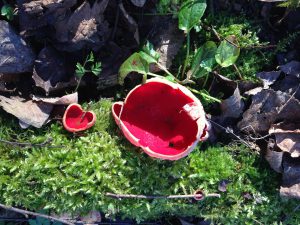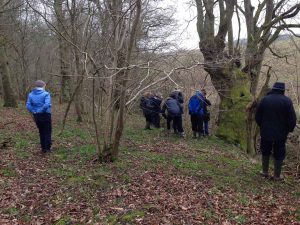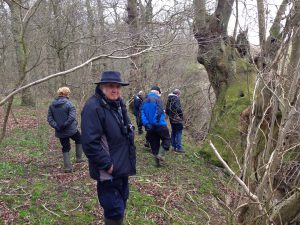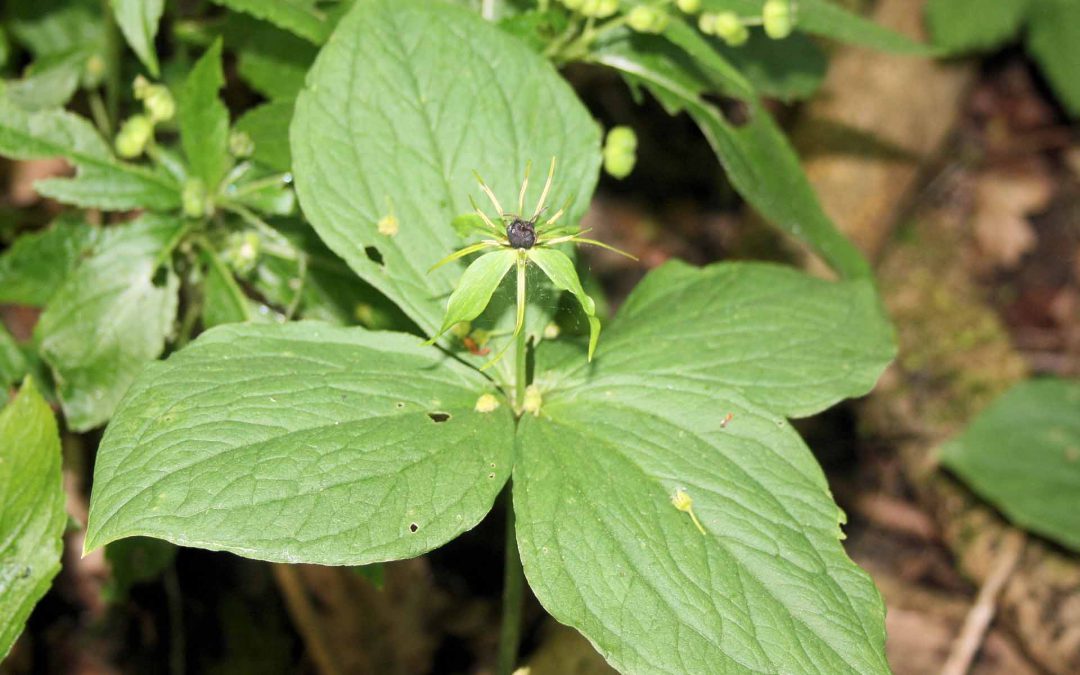Although the afternoon was cool and overcast, eleven members began a walk around Great Merrible Wood, ably lead by LRWT Conservation Officer, Andy Lear.

The wood which is owned and managed by the Leicestershire and Rutland Wildlife Trust is situated just within Leicestershire and overlooks the Eyebrook Reservoir. It is on steeply sloped site which presents its own problems. Andy described the wood as being on an ancient wood site although most of the trees are not very old. Woodland has been present on the site since at least 1824 although there are clear signs of ancient ridge and furrow cultivations in one section. The wood is composed mainly of ash with some pedunculate oaks with hazel and field maple in the varied shrub layer. Andy demonstrated the effect of agricultural run-off of fertiliser which has encouraged nettles to grow within the upper wood boundary. At the bottom of the wood, a deeply eroded ditch abuts an arable field from which the top soil is being deposited.
The management plan is mainly aimed at keeping the major rides as wide as possible to encourage woodland invertebrates, allowing the gradual decay of fallen timber to provide habitats for other insects and fungi. The wood is particularly rich with bluebells in season and other species such as Herb Paris, and broad-leaved and violet Helleborines are established.
Although the spring season had been delayed and little flowering botany or birds were observed, we found plenty of woodland botany at early stages of development. Notably along the ride floors were large numbers of scarlet elf caps which showed up vividly. The fungus lives on decaying wood which is prevalent just below ground. Dog’s mercury was flowering and the first primroses were in early bloom. The leaves of arum lily were obvious and hard shield fern was growing on the sides of the drainage ditches. Most of the woodland is on boulder clay but occasional wild privet was growing on areas of more calcareous soil.
Symptoms of ash die-back were obvious on the young saplings but Andy explained that signs were also found on more mature trees which may weaken them and make them more susceptible to other diseases and pests in the future. It was interesting to note that there were newly seeded field maple appearing in the open areas. Andy believes that waiting to see what happens to the established trees and allowing natural regeneration of resistant species will give an idea of how to manage woodland where disease pressure will eventually change the arboreal status of the wood. This may also give clues as to the type of non-local trees that might be planted in the future when the ash has disappeared.
To round up the visit, we saw plenty of Alfred’s cakes, the round dark brown fungal fruiting bodies on dead branches and saw a number of badger latrines, muntjak prints and a few mole hills. The only birds heard were both blue and great tits, robin, blackbird and chaffinch along with the chack of a greater spotted woodpecker.


Anthony Biddle
March 2018
